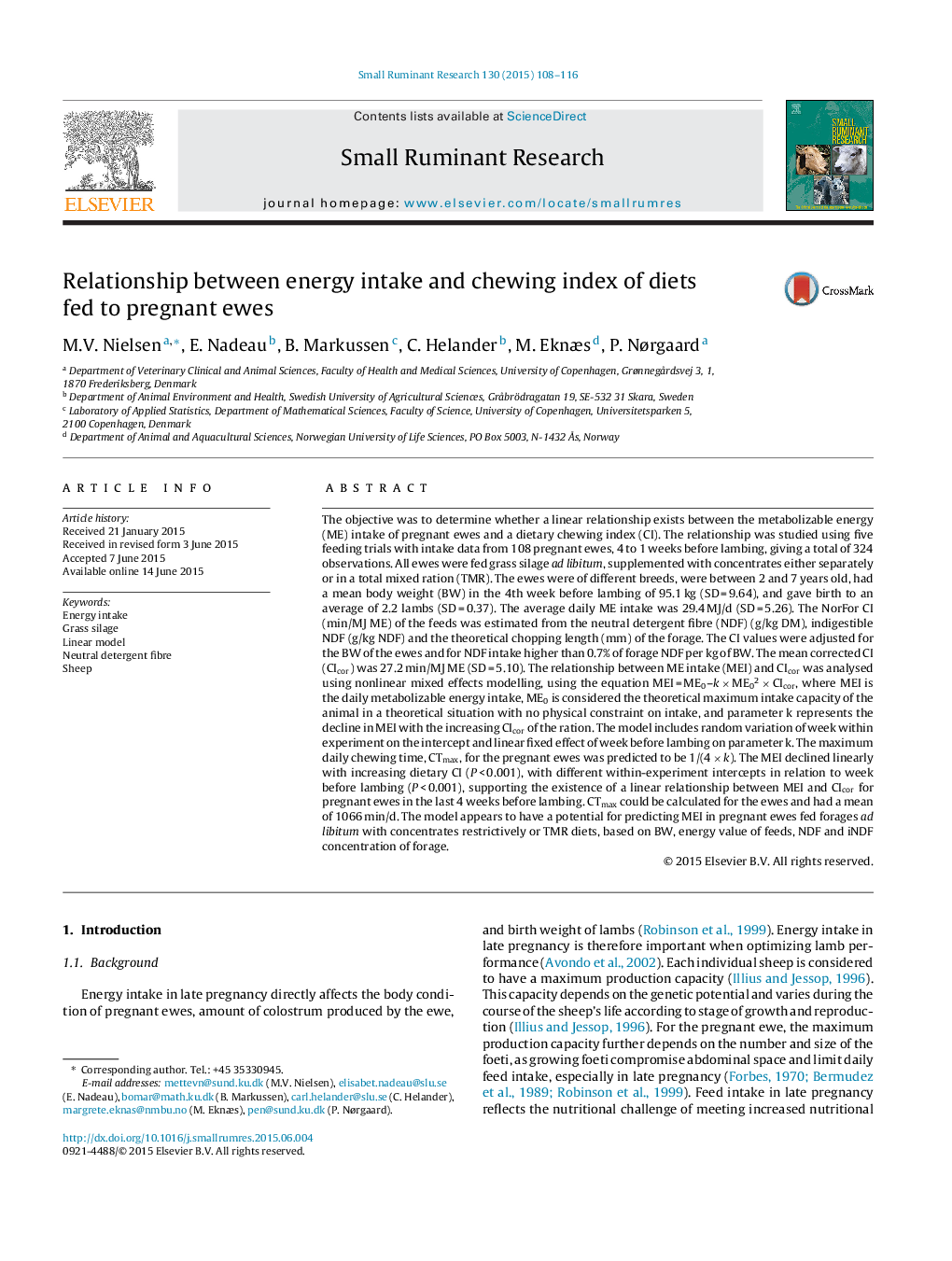| کد مقاله | کد نشریه | سال انتشار | مقاله انگلیسی | نسخه تمام متن |
|---|---|---|---|---|
| 2456849 | 1554362 | 2015 | 9 صفحه PDF | دانلود رایگان |
• Metabolizable energy intake in pregnant ewe decreased with increasing chewing index.
• The intercept value was considered as the metabolic intake capacity of the ewe.
• Decrease of intake at increasing chewing index is related to intake capacity.
• The estimated maximum daily chewing time decreased during late pregnancy.
The objective was to determine whether a linear relationship exists between the metabolizable energy (ME) intake of pregnant ewes and a dietary chewing index (CI). The relationship was studied using five feeding trials with intake data from 108 pregnant ewes, 4 to 1 weeks before lambing, giving a total of 324 observations. All ewes were fed grass silage ad libitum, supplemented with concentrates either separately or in a total mixed ration (TMR). The ewes were of different breeds, were between 2 and 7 years old, had a mean body weight (BW) in the 4th week before lambing of 95.1 kg (SD = 9.64), and gave birth to an average of 2.2 lambs (SD = 0.37). The average daily ME intake was 29.4 MJ/d (SD = 5.26). The NorFor CI (min/MJ ME) of the feeds was estimated from the neutral detergent fibre (NDF) (g/kg DM), indigestible NDF (g/kg NDF) and the theoretical chopping length (mm) of the forage. The CI values were adjusted for the BW of the ewes and for NDF intake higher than 0.7% of forage NDF per kg of BW. The mean corrected CI (CIcor) was 27.2 min/MJ ME (SD = 5.10). The relationship between ME intake (MEI) and CIcor was analysed using nonlinear mixed effects modelling, using the equation MEI = ME0–k × ME02 × CIcor, where MEI is the daily metabolizable energy intake, ME0 is considered the theoretical maximum intake capacity of the animal in a theoretical situation with no physical constraint on intake, and parameter k represents the decline in MEI with the increasing CIcor of the ration. The model includes random variation of week within experiment on the intercept and linear fixed effect of week before lambing on parameter k. The maximum daily chewing time, CTmax, for the pregnant ewes was predicted to be 1/(4 × k). The MEI declined linearly with increasing dietary CI (P < 0.001), with different within-experiment intercepts in relation to week before lambing (P < 0.001), supporting the existence of a linear relationship between MEI and CIcor for pregnant ewes in the last 4 weeks before lambing. CTmax could be calculated for the ewes and had a mean of 1066 min/d. The model appears to have a potential for predicting MEI in pregnant ewes fed forages ad libitum with concentrates restrictively or TMR diets, based on BW, energy value of feeds, NDF and iNDF concentration of forage.
Journal: Small Ruminant Research - Volume 130, September 2015, Pages 108–116
